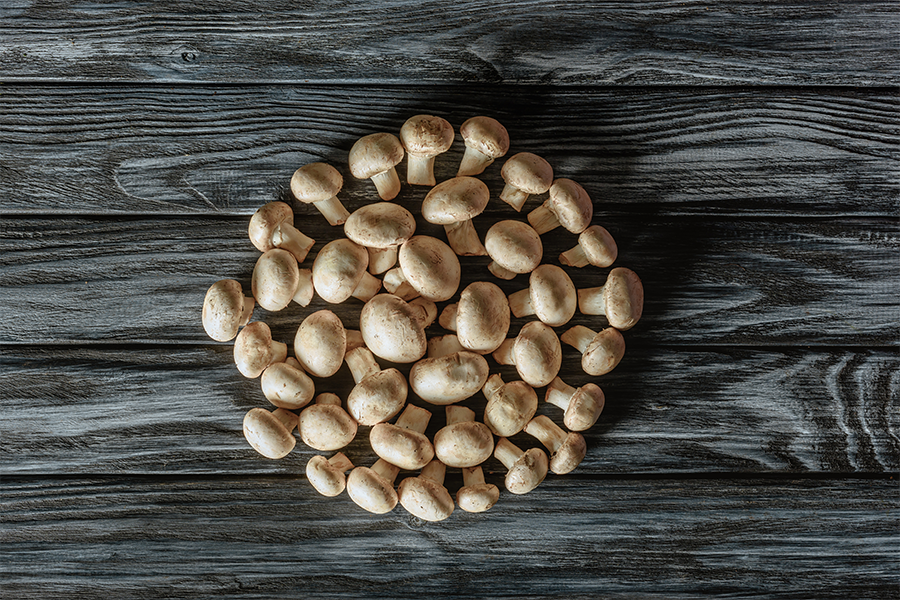
Meati Foods, a recent startup based in a brewery-like space in Boulder, CO, is doing something other plant-based food manufacturers can only dream about: making plant-based versions of steak and chicken breast.
Well, not exactly plant-based; make that fungus-based.
Wait! Don’t stop reading! Here’s one time when fungus is our friend, the basis of whole cuts of vegan steaks and chicken breast that look and taste like their real-meat counterparts. At least for now, Beyond Meat and Impossible Foods can only look on with envy.
The Meat Is the Mycelium
Mycelium, the fungal part of mushrooms (think of the mycelium as the root and the mushroom as the flower), is the basis of Meati’s unique “meat-growing” process. Not only is it capable of naturally replicating real meat’s texture and all-important taste, but it also grows amazingly fast during fermentation processing, so Meati has plans to make a lot of its products in a very short time.
The mycelium “brewing” in Meati’s fermentation tanks grows so fast, the tanks fill up overnight. “The particular strain that we use is one of the fastest-growing organisms on the planet,” says Tyler Huggins, CEO and co-founder of Emergy Foods, Meati’s parent company.
After fermentation, next steps include a proprietary process Huggins can’t discuss, but the company says that after the fibers are harvested, they are drained of water and mixed with natural ingredients that include vegetables before being shaped into the forms of steak and chicken breast.
Why Mycelium?
Mycelium grows in long fibrous strands that Huggins says “are similar to muscle strands in products like steaks and chicken breasts. That’s very difficult to replicate with plant-based proteins…That’s why you see mostly ground [meat vegan] products. …We have that natural fibrous structure, and so that gives you the mouth-feel of whole-muscle products.”
Meati’s mycelium “meat” also meets several goals important to many vegans:
Minimal processing
No wheat, soy, or pea protein (mushrooms are rich in protein)
No contribution to the worldwide environmental effects of cattle farming for food
Meati’s Growing Future
Although Meati has successfully developed both steak and chicken breast “meat,” they are concentrating on steak as the first product to go to market. That’s because, like real steak, it will sell at a higher price, an important consideration for a company that’s still producing on a small scale.
They don’t plan to be small for long, however. Huggins is excited about the great amount of food Meati looks forward to producing that can help feed the world nutriciously and deliciously:
“At scale, we could produce the meat equivalent of nearly 4,500 cows overnight using a process that’s over a thousand times more efficient per acre as far as resource use.”
They also anticipate that when they scale up, their costs will go down. That’s important to Meati, too, not only for its bottom line but also for its goal of providing good food for all who need it at prices they can afford, wherever they live.
“We have a mission in our company to provide nutritious, plant-based meat to everyone, forever,” says Higgins. (The FDA classifies the food as plant-based meat even though it’s actually made with fungi.) “What that means is, it has to be affordable to everyone.”
Meati’s marketing plan starts with placing their products on the menus of a limited number of Colorado restaurants and building from there. “We’re setting our standards very high when it comes to quality and taste and texture,” Huggins says. “We want it to be a truly drop-in replacement to animal-based meat products.”
Overall, Meati’s goal is nothing less than hearing, first from restaurants and then from all who consume their steak and chicken products, “We like it. It’s on par with animal protein.”
Huggins sums up: “That’s what we’re going for.”

